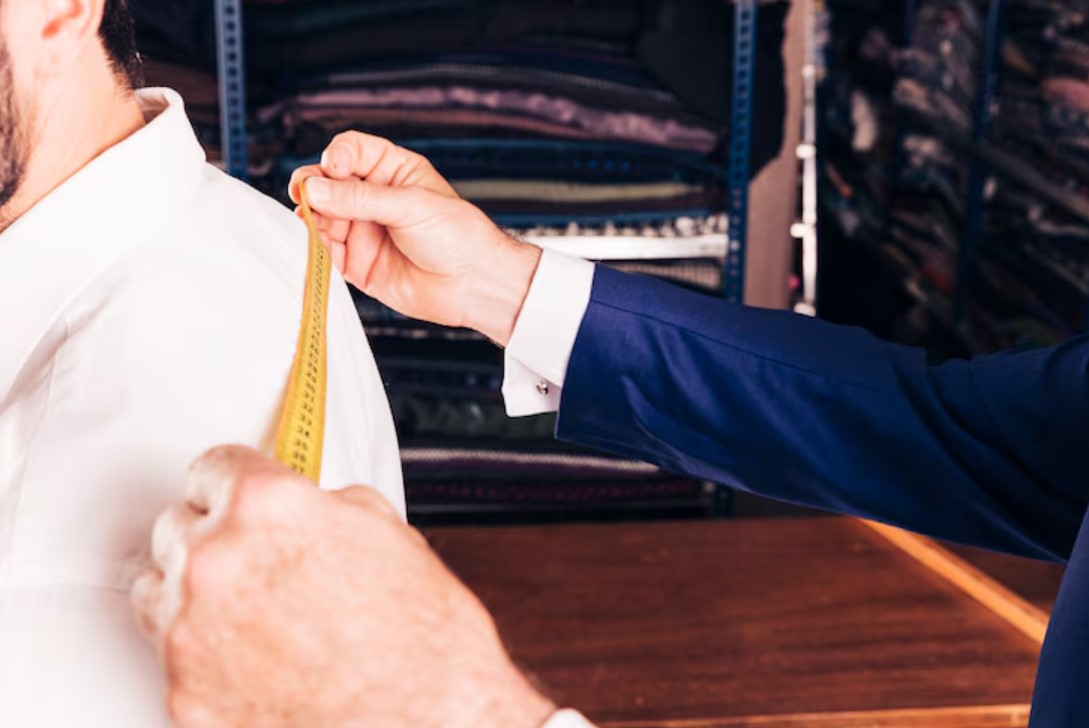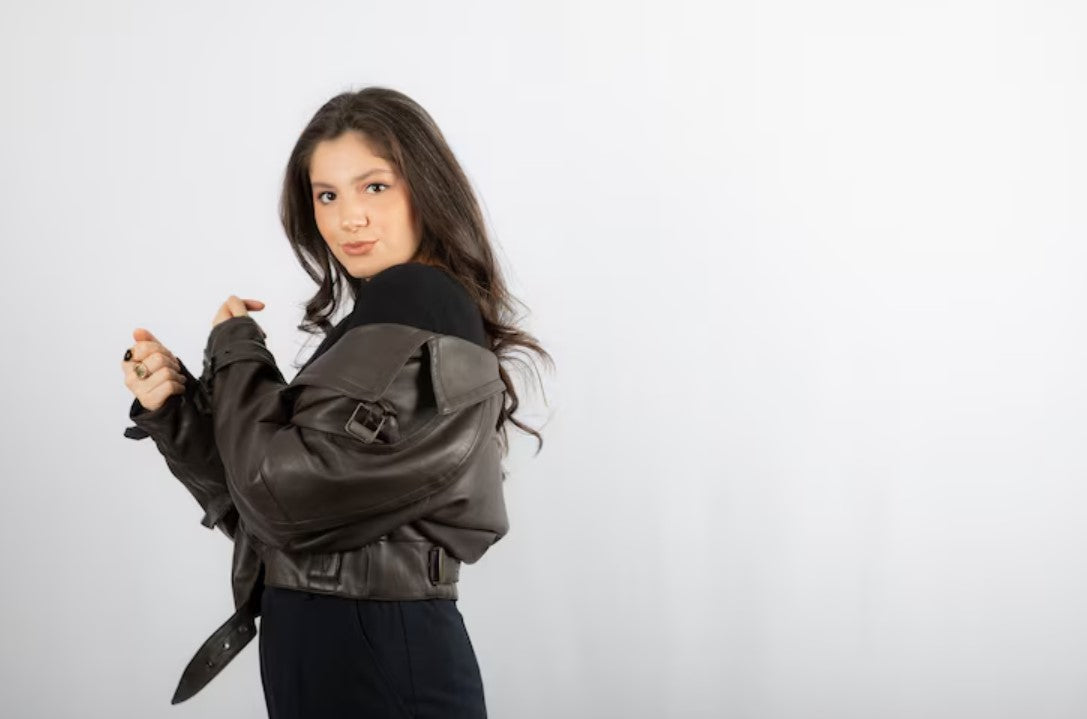
How to Measure for a Leather Jacket in the USA in 2025: A Complete Fit Guide
In 2025, the leather jacket is more than just an iconic wardrobe staple—it’s a personal style statement that bridges rugged charm with timeless sophistication. Whether you're investing in a premium bomber, a sleek moto style, or a vintage-inspired suede piece, one factor determines whether your leather jacket will look effortlessly cool or awkwardly off: the fit.
Buying a leather jacket that fits like it was made for you isn't just about picking your usual shirt size. It starts with taking accurate body measurements and understanding how leather behaves—especially in the diverse fashion climate of the USA, where trends, climates, and sizing standards vary coast to coast. In this guide, we’ll walk you through how to measure for a leather jacket in 2025, ensuring a perfect fit no matter your shape, size, or style preference. Before this, explore variety of Leather Jackets in USA at Cuir Jackets here.
Why Accurate Measurements Matter More Than Ever in 2025
With the rise of online shopping, virtual try-ons, and made-to-order fashion, knowing your measurements has become essential. Leather jackets aren’t like cotton tees or hoodies—they don’t have much give, and poorly fitted ones can quickly turn into costly regrets. Moreover, leather molds to your body over time, so you want it to start snug but not constrictive.
In 2025, sustainable fashion is also influencing sizing decisions. Many American consumers are choosing custom or slow-fashion leather jackets that last a decade or more—making precise measurements even more important.
What You Need Before You Start Measuring
Before grabbing a tape measure, you’ll want to gather the following:
-
A flexible measuring tape (inches preferred for U.S. sizing)
-
A friend (ideal for getting accurate back and shoulder measurements)
-
A fitted shirt or base layer (not bulky clothing)
-
A notepad or phone to record measurements
Tip: If you're ordering from an online store, check whether the size chart is based on body measurements or jacket measurements. This distinction will help you compare your numbers appropriately.
Key Measurements to Take
1. Chest
The chest is the most important measurement when it comes to leather jackets, especially for structured styles like racer or cafe jackets.
-
How to Measure: Position the measuring tape around the broadest part of your chest, usually just below the armpits and across your shoulder blades. Ensure the tape is snug but not too tight.
-
Fit Tip: A leather jacket should be slightly snug in the chest when new. It will stretch a bit with wear, so avoid sizing up too much unless you plan to layer underneath.
2. Shoulders
Shoulders determine how the jacket drapes and whether it restricts arm movement.
-
How to Measure: Measure from one shoulder seam to the other, straight across your back. A friend can help ensure accuracy.
-
Fit Tip: A jacket that’s too tight in the shoulders will pull and crease; too loose, and it’ll droop and look oversized.
3. Sleeve Length
Leather sleeves that are too long look sloppy. Too short, and they limit comfort.
-
How to Measure: Begin at the top of your shoulder where it connects to your arm, and measure straight down to your wrist bone. Keep your arm slightly bent for best results.
-
Fit Tip: Ideal sleeve length ends right at the wrist or slightly over if you prefer a modern moto look.
4. Waist
Some leather jackets—especially fitted or belted ones—are tailored at the waist.
-
How to Measure: Wrap the tape around the narrowest part of your waist, typically above the belly button.
-
Fit Tip: If you prefer a more cinched or cropped look, this measurement becomes key. For straight-cut jackets, this might be less critical.
5. Jacket Length
Especially important for women’s leather jackets or longline styles.
-
How to Measure: From the top of your shoulder (near the base of the neck) down to where you want the jacket to end—e.g., mid-waist, hips, or thighs.
-
Fit Tip: Cropped jackets go well with high-rise jeans or dresses; mid-length and longer styles offer more coverage for colder months.
6. Bicep
More relevant in 2025’s trend of oversized or utility-style jackets, bicep width affects comfort when layering.
-
How to Measure: Flex your bicep slightly and wrap the tape around the fullest part.
-
Fit Tip: Leave a little extra room if you plan to wear hoodies or sweaters underneath.
Fit Styles and Their Sizing Implications
In 2025, the leather jacket scene in the USA is more varied than ever. Here's how measurement priorities vary by jacket style:
-
Moto/Racer Jackets: Slim fit, often cropped. Prioritize chest, shoulders, and sleeve length.
-
Bomber Jackets: Relaxed fit with elastic hems. Chest and waist measurements matter most.
-
Trucker Jackets: Semi-structured and slightly boxy. Shoulder width and jacket length are key.
-
Blazers/Leather Coats: Tailored styles need precise chest, shoulder, waist, and length measurements for a polished look.
Regional Considerations Across the USA
Depending on where you are in the U.S., you may want to consider different layering needs and climate realities:
-
Northeast & Midwest: Cold weather = heavier layers. You may want to size up slightly to accommodate sweaters.
-
West Coast (California, Pacific Northwest): Lighter layering, but mobility is key. A trimmer fit works well.
-
Southern States: Thin lining and breathable leather are preferred. Measurements should prioritize comfort and ventilation.
The Virtual Try-On Revolution
By 2025, many retailers are using AR (Augmented Reality) and AI-driven size prediction tools that suggest the best size based on uploaded photos or body data. However, they still rely on initial manual measurements, so getting accurate numbers yourself remains important.
Made-to-Measure vs. Ready-to-Wear
If you're going the custom route—which is becoming more popular in 2025 due to brands like Independence Leathers (USA), The Jacket Maker (global), and sustainable artisan labels—you’ll typically need to send in all six key measurements along with fit preferences.
For ready-to-wear, compare your measurements with the brand’s size chart. Don’t be surprised if you’re a Medium in one label and a Large in another—brand sizing still lacks standardization in the U.S.
Final Tips for the Perfect Fit
-
Double-check measurements. One wrong number can throw off the entire fit.
-
Try sitting and raising your arms in a test jacket if possible. Range of motion is crucial.
-
Allow for natural stretch. Leather gives over time, so slightly snug is better than too loose.
-
Keep posture in mind. Your natural stance affects how jackets fall on your body.
-
Consider the jacket's lining and type of leather. Thicker linings and stiff hides (like cowhide) take longer to break in, while lambskin and goatskin are more forgiving.
Conclusion
Measuring for a leather jacket in 2025 isn't just about numbers—it's about aligning fit with function, style, and the modern tools available to consumers. With the right measurements and a clear understanding of your fit preferences, your next leather jacket won't just look good—it'll feel like it was tailored just for you.
In a world of fast trends and shifting styles, one truth remains: a perfectly fitted leather jacket never goes out of fashion.



Leave a comment
This site is protected by hCaptcha and the hCaptcha Privacy Policy and Terms of Service apply.